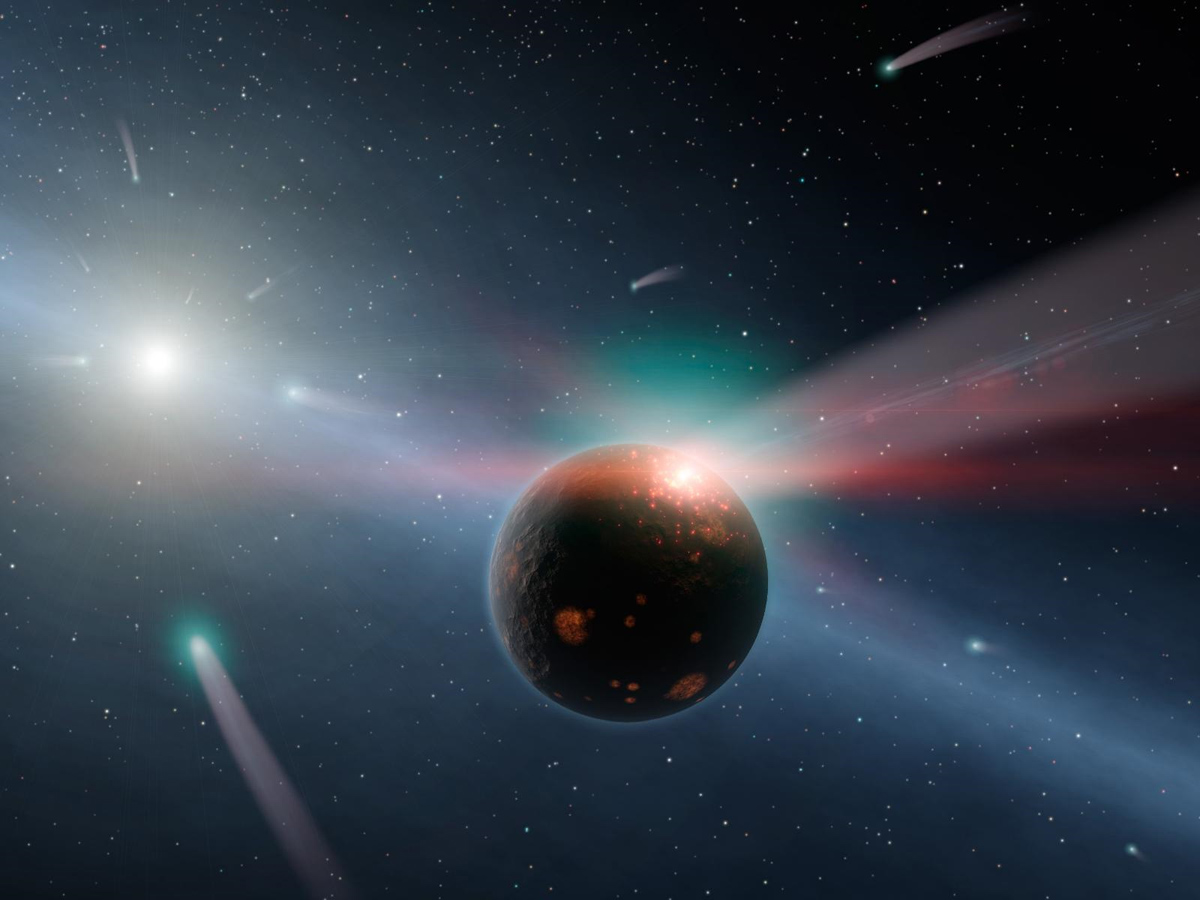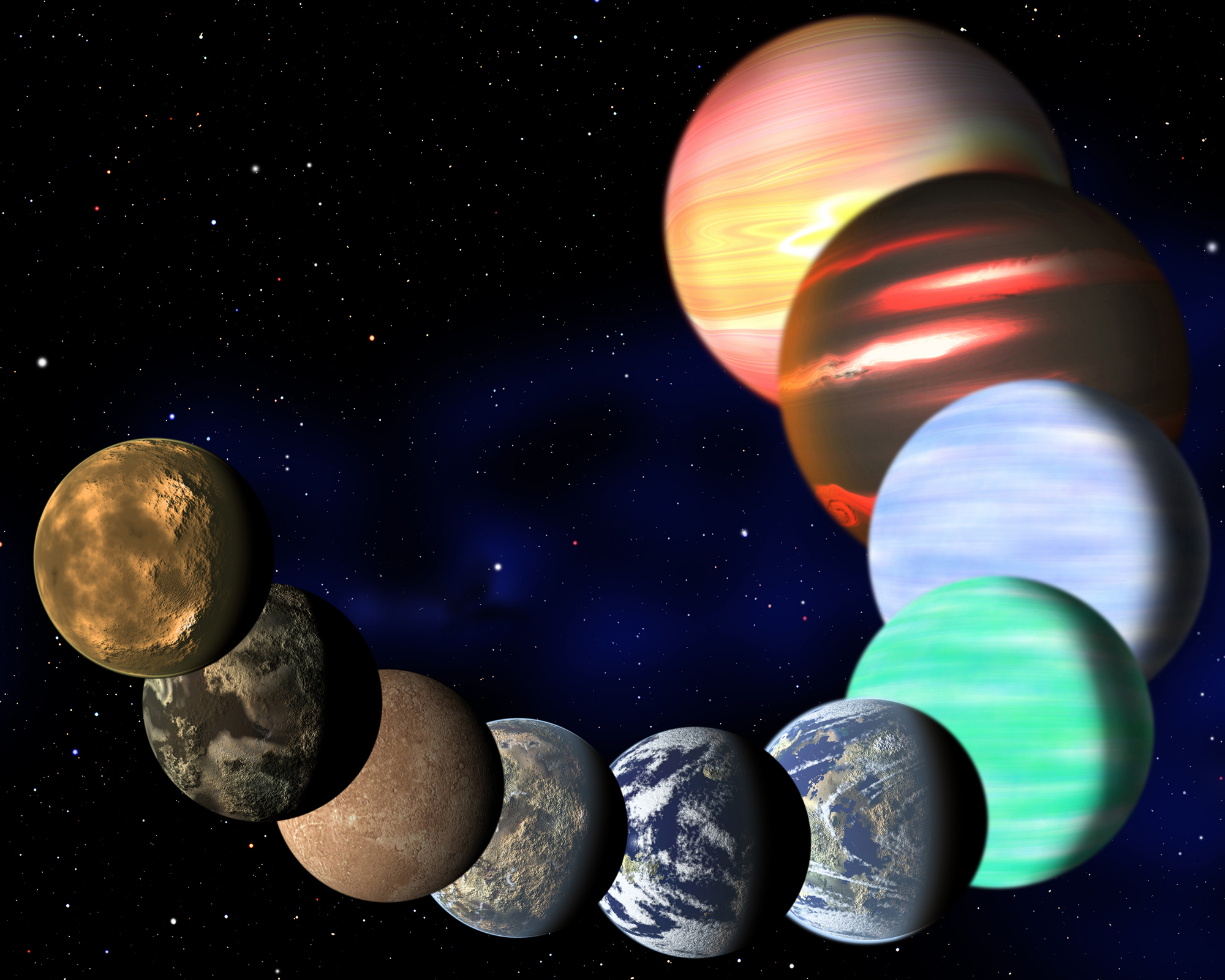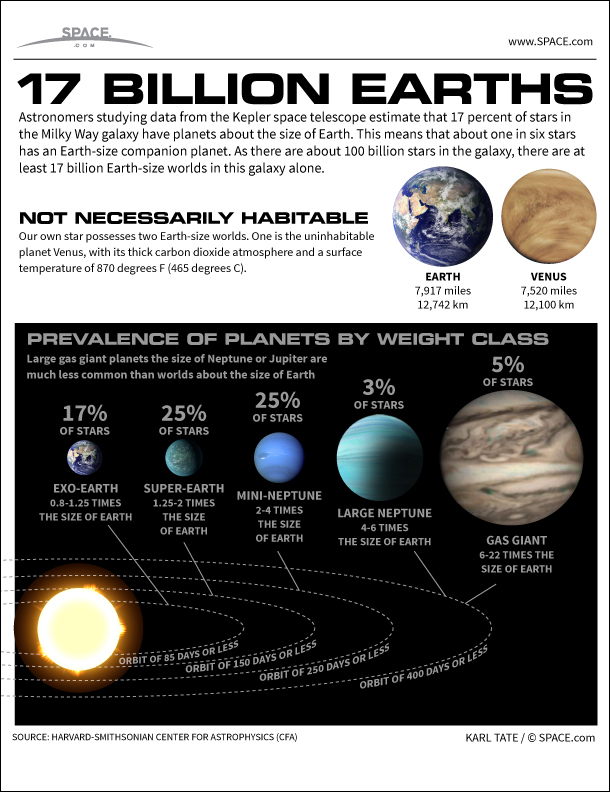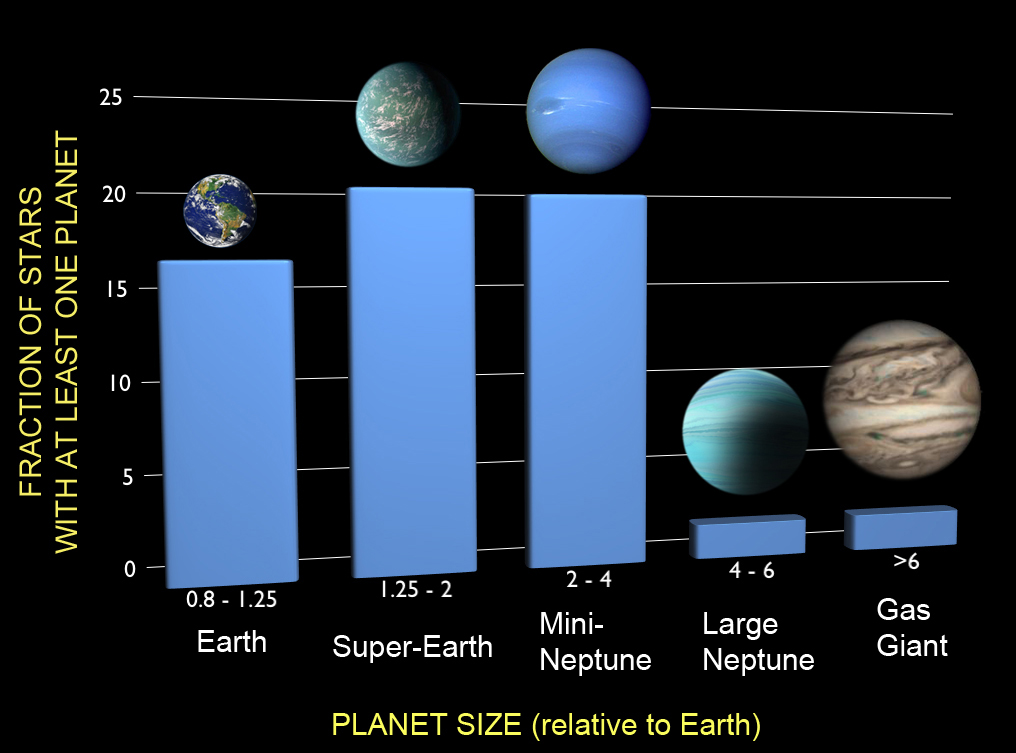Space Photos from the 221st American Astronomical Society Meeting
NASA Kepler Planet Discoveries: Jan. 2013
This NASA graphic depicts the changes in alien planet discoveries, arranged by planet size, as seen by NASA's Kepler spacecraft. As of Jan. 7, 2012, there are 2,740 potential alien planets. [Full Story]
Galaxy NGC 660 Outburst
A massive outburst erupts from the giant black hole at the center of the distant galaxy NGC 660, which is 44 million light-years from Earth, in this via captured by ground-based telescopes. Image released Jan. 7, 2013. [Full Story]
Exocomets May be Common In Milky Way
An artist's illustration of a comet storm around a nearby star. [Full Story]
Earth-Size Planet Population: Kepler Planets
This artist's illustration represents the variety of planets being detected by NASA's Kepler spacecraft. Scientists now say that one in six stars hosts an Earth-size planet. [Full Story]
17 Billion Earths Fill our Milky Way Galaxy (Infographic)
Infographic: Practically all sun-like stars have planets, and one in six has a planet the size of Earth, a new study finds. [Full Story and larger image]
Planet Discovery Frequencies: Kepler Mission
This chart depicts the frequencies of planets based on findings from NASA's Kepler space observatory. The results show that one in six stars has an Earth-sized planet in a tight orbit. [Full Story]
Wide Binary Star System
The widest binaries and triple systems have very elongated orbits, so the stars spend most of their time far apart. But once in every orbital revolution they are at their closest approach. They may pose a danger to any planets orbiting them.
Breaking space news, the latest updates on rocket launches, skywatching events and more!

Space.com is the premier source of space exploration, innovation and astronomy news, chronicling (and celebrating) humanity's ongoing expansion across the final frontier. Originally founded in 1999, Space.com is, and always has been, the passion of writers and editors who are space fans and also trained journalists. Our current news team consists of Editor-in-Chief Tariq Malik; Editor Hanneke Weitering, Senior Space Writer Mike Wall; Senior Writer Meghan Bartels; Senior Writer Chelsea Gohd, Senior Writer Tereza Pultarova and Staff Writer Alexander Cox, focusing on e-commerce. Senior Producer Steve Spaleta oversees our space videos, with Diana Whitcroft as our Social Media Editor.







